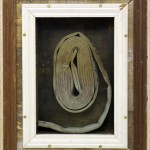Molly’s Game
The same year that Joshua Walker (2017) wrote “Torn dollars and war-wounded francs: Money fetishism in the Democratic Republic of Congo,” the movie, Molly’s Game (2017) was released. Molly’s Game (2017) is a movie based on the true story of Molly Bloom, an injured Olympic skier who then decides to take a gap year in LA instead of going to Law school. In LA, while working as a waitress, she accidentally enters poker circles and eventually goes on to run her own poker games for movie stars, sports players, bankers, and eventually mafia members. As we follow Molly from one poker game to another, we see large sums of money being exchanged among the players involved in her game. Here, in the game, money is made and lost through the movement of chips and dealing of cards. In a world where money itself is fetishized, these chips and cards go a step further.
Interestingly, the main themes in Walker’s article pervade Molly’s Game: fetishism of money, the material and immaterial properties of fetishized money, and the mutable and immutable properties of money. Walker addresses the topics at hand by studying the case of Congolese currency. He shows how the Congolese subvert the state’s power by valuing money not just based on the symbolic value stated on it, but also based on how well preserved the material medium of the money is.
The short-lived nature of the poker games makes the fetish-like quality of the poker chips and the deck of cards very apparent. On the one hand, values of the poker chips Molly uses for her game are dependent on arbitrary factors such as the social connections she maintains for the purposes of the game, the interior designing of the venues in which she holds the games, the waitresses sense of fashion, the drinks served, etc. The cards and chips lose their value altogether if Molly’s players boycott her games. On the flip side, the combined movement of the cards and chips runs the flow of money. While the deck of cards have values written on them that correspond to a hierarchy within the deck, they also correspond to a number of chips you could be winning or losing, and in turn, how much money you would possess by the end of the game. Thus, the cards and chips, whose values are assigned by the human agents who run and play the game, then determine how much monetary value the human agents end up with. Michael Taussig (1992) states that a fetish is something which we submit to, and then try and revolutionize and take in a new direction. So in this case, who constitutes the fetish? The cards and chips, or the human agents?
The chips’ materiality plays a small role in its fetishized value, compared to that of the cards’. The cards must all be perfectly preserved and appear homogeneous and unidentifiable on one side—a requirement to enter a game. The cards lose all value in the game once they lose their materiality. In a sense, the game runner and players are to a certain degree controlled by the material state of the very things they imbue with value.
Molly’s Game. 2017. STXfilms.
Walker, J. 2017. Torn Dollars and war-wounded francs: Money fetishism in the Democratic Republic of Congo. American Ethnology 44 (2): 288-299.
Taussig, M.T. 1992. The Nervous System. Print.
Contributed by KumeriBandara on 26/01/2020






